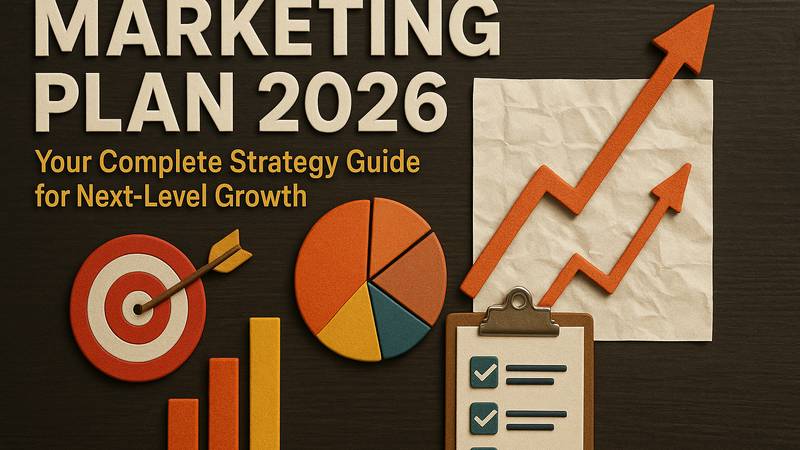
Improve Your Email Response Rates with List Segmentation
Want to improve your email marketing response rates? Consider segmenting your list. Even if you only have 20 people on your list, it’s never too early to start sending your subscribers specifically targeted information and creating categories that will come in even handier as your list grows.
This is also why we offer a simple tool that allows you to do just that (available in our Classic product, and coming soon to the new VerticalResponse). But before you rush off to start dissecting that email list, let’s fill you in on the basics of list segmentation, why you should consider it and some ideas for smart segmentation.
What is segmentation?
Segmenting a list is simply the process of dividing it into sub-groups. While everyone on an email list may get some messages, you can then send very specific or targeted messages to just one group when the occasion arises. This lets you target individual readers who may be more receptive to your messages.
Segmentation is useful for a variety of reasons:
- Ever felt inundated with marketing emails for a product you’ve already purchased? Segmenting allows you to target non-buyers for a specific product or service, or let them know about a specific sale, but avoid overwhelming those who have already bought.
- Similarly, you can target buyers of a product with how-to tutorials, tips and best practices, or even additional items that might improve their experience.
- Segmenting can increase the effectiveness of the emails you send because they’re more specific.
- If a reader is more interested in just one area of what you sell, they no longer have to unsubscribe due to off-topic emails if you use list segmentation.
- Segmenting also allows you hone in on your most active email readers and the content they love the most. Segmenting lists by those who regularly open and click emails within a certain period of time gives you valuable information that you can use to improve the next email.
Capture information
You can begin by capturing information you’ll need for segmentation right when subscribers first opt in to your email list. While you don’t want to overwhelm readers with long sign up forms as part of the opt-in process (which should be kept quick and easy), asking one or two specific questions can help you with segmentation, whether that’s a zip code or a job title or the type of information they’re most interested in (selected from a drop-down menu). You can also ask current subscribers to send you the information you’re looking for.
Location
If you’d like to let your readers know about events or trade shows in their area, it’s as easy as collecting their zip codes. Segmenting lists by location may be helpful simply for referring to specific events in an area whether you plan on attending or not. For example, perhaps one of the products or services you sell would be particularly geared toward an event. And it’s possible that customers in a specific region might prefer certain products or services, so you can target them with special offers. For instance, articles with tips for cold drinks (or specials on air conditioners) might be sent to geographic areas where temperatures are high, and sales on heating units or recipes for warm drinks could be sent to regions with long cold spells.
Engagement
Create a segment of your list for people who regularly engage with your messages by opening, clicking and perhaps even purchasing or making a donation or signing up for an event. You could have a segment for those who regularly click on links in your email marketing campaigns. They may be interested in more special tips or offers. Those who aren’t as responsive could be put on a less frequent list, or one you try out different subject lines with. Once a reader begins clicking on links or looking at your content, you can switch them to the more responsive list segment.
This strategy is particularly effective if one of your subscribers is in the market for a product or service but decides to hold off for a period of time – something that could happen for a variety of reasons. Subscribers will be less likely to unsubscribe if they’re not inundated with messages during the time they’re not actively purchasing, but can get right back into your sales funnel once they decide to start looking again – provided, for example, that you segment by email links readers click on.
Current clients
Segmenting isn’t just about increasing sales or converting prospects into paying customers –though that is a part of it. But it’s also for showing current customers appreciation with exclusive offers, encouraging word-of-mouth sales through special referral incentives or sales, and providing tips and how-tos for clients so that they can use the products they’ve already purchased more efficiently. Similarly, prospects can get special first-time offers that current clients don’t necessarily need to know about.
Areas of interest
If you offer several different services, it may be useful to segment users based on which type of content they interact with. For example, an accounting firm may send out different emails to non-profit companies and for-profit businesses, and entirely different content to individual taxpayers. If your company sells heating and cooling supplies, you may offer different tips entirely for those interested in air conditioning maintenance as you do for those purchasing heaters – who might be looking for information on insulating their homes.
Multiple segments
Remember that some of your readers may fit into more than one segment, so keep that in mind when determining how much email to send.
Be selective
As important as list segmentation is, choose segments you can maintain. If you segment too much, you’ll need additional time to create targeted emails for each group. However, it’s possible to send most email messages to everyone on your list and only to send to different segments as needed.
Getting started
We offer a powerful but easy-to-use tool to help you with list segmentation. The tool is found within the “Lists” section of VerticalResponse Classic accounts (this feature is coming soon for the new VerticalResponse). For more information, check out our tutorial.
Want more marketing tips and tactics? Sign up for the free VR Buzz.
© 2014, Contributing Author. All rights reserved.



